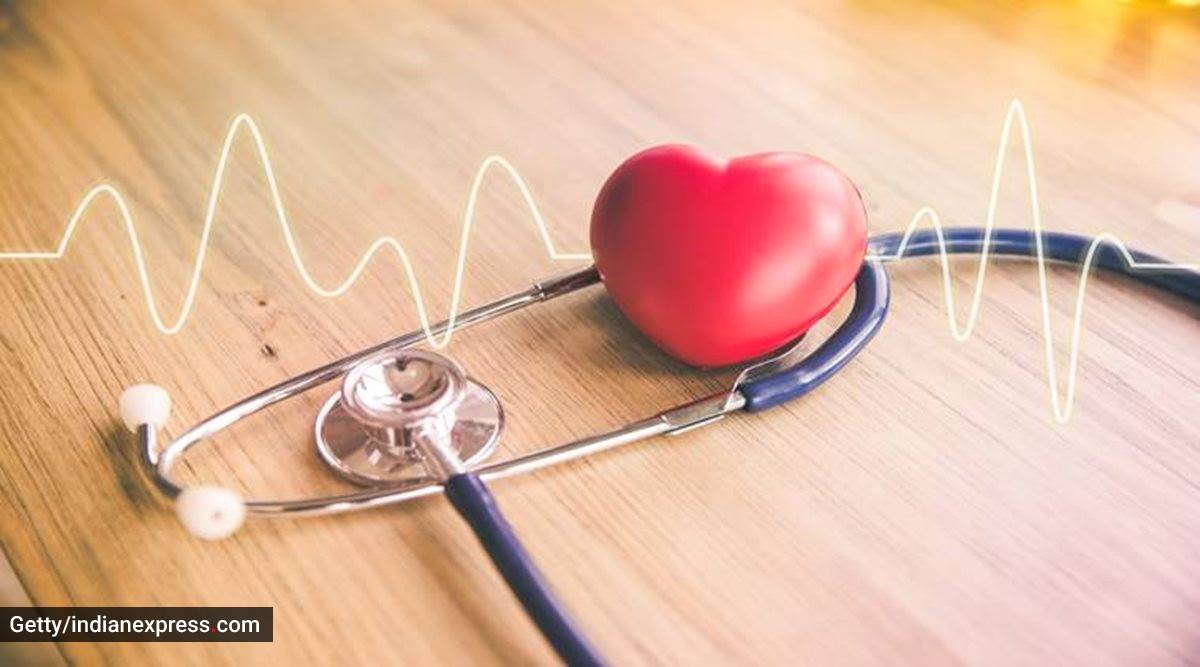 Most sudden cardiac arrests occur out of hospital and making the community at large aware of CPR protocol can help save lives.
Most sudden cardiac arrests occur out of hospital and making the community at large aware of CPR protocol can help save lives.Written by Aniruddha Vyas
The COVID-19 pandemic has crippled healthcare systems worldwide and impacted human lives in unprecedented ways. As per reports, tertiary care referral hospitals around the world, including in India, have witnessed a significant decrease in incident patients with acute heart attacks. However, some reports reveal that while there is a decrease in reported heart attack cases, there is an increase in deaths from cardiac arrests in and out of hospital. This could be linked to the general scare of stepping out due to the pandemic and visiting hospitals due to the fear of exposure to the virus. With lockdowns, transport and travel to tertiary care hospitals have also got affected.
Even in normal times, people ignore initial symptoms such as heart palpitations, irregular heartbeats, chest discomfort, shortness of breath and dizziness and that can precede a major cardiac event. Moreover, the uncertainty fostered by the pandemic could be the cause of mental stress and panic which itself may precipitate cardiac events. On noticing any such symptom, patients should rush to the nearest hospital equipped with an electrocardiogram (ECG) facility. A well-interpreted ECG gives a lot of information on cardiac status as in the case of an impending or ongoing heart attack or sudden cardiac arrest.
Sudden cardiac arrest is a state when the heart abruptly stops its function (due to electrical disturbance in the rhythm of the heart) leading to complete cessation of blood flow to vital organs like the brain and heart. This is observed as the sudden collapse of the patient along with complete unresponsiveness and the breathing effort ceases. It takes a few seconds in this situation for the brain to incur irreversible damage and hence time is extremely critical and immediate and prompt attention is needed. This, if not corrected immediately, leads to sudden cardiac death. A resuscitative effort, CPR (Cardiopulmonary Resuscitation), is instituted immediately.
Protocols for effective CPR are being taught in public education forums. However, there is an immense unmet need to address this issue. Most sudden cardiac arrests occur out of hospital and making the community at large aware of CPR protocol can help save lives. The most vital part of CPR is an effective chest compression delivered with brisk pushing force with two palms joined and elbow kept straight over the chest of the person in cardiac arrest so as to compress the chest by around two to four inches inwards, at the rate of around 90 compressions in a minute. This should be initiated immediately rather than wasting time on searching identity of the person, or calling for help, informing the relatives. An effective CPR if continued till the emergency medical care is made available with a facility of defibrillation can save a life. If a person in cardiac arrest is not given this shock through a defibrillator, their chance of survival decreases by about 10 per cent every minute.
Social groups and public-doctor partnership to share knowledge and teaching sessions on CPR are the need of the hour. The widespread availability of public access defibrillators, also called AED (Automated External Defibrillator), is helpful in this circumstance as the heart in cardiac arrest can be restarted with its pumping function by shock delivered from this machine. Once saved out of arrest, the person needs evaluation for reasons behind the cardiac arrest and proper treatment to prevent such events in future. There is a large number of “at-risk” people, with cardiac comorbidities. Proper identification and treatment of such individuals can save many potential cardiac arrests.
The event of cardiac arrest, though it can be speculated as a risk in a particular group of patients, cannot be precisely predicted. There are no warning symptoms. Clearly, even the first event itself is catastrophic when it occurs, so a need for continuous protection is an obvious need for such patients. Automated Implantable Cardiac Defibrillator (AICD), plays a vital role here. It has transformed the management of patients who are at risk or have once developed and survived the dreaded event of cardiac arrest.
The device has seen many advancements in the technique and technology. Essentially a small device which is implanted under the skin below the left collar bone, it can identify the event of cardiac arrest by checking electrical signals from the heart and treat it in a timely manner by delivering electric pulses to restore normal heart rhythm. AICDs available today are compact devices with long battery life spans up to 15 years — they are compatible with magnetic fields of MRI. Subcutaneous Implantable Defibrillator (S-ICD) is the latest update in the technology of AICD. It obviates the need to place a wire inside the heart through a vein, like in conventional transvenous implantable cardiac defibrillators — hence it may lead to reduced hospital stays, low infection rate and a better quality of life.
Even with the rapid developments in medical technology and device therapies, the crux for initial management remains effective CPR where the role of the community cannot be overstated. We need to focus on sessions to educate people on CPR protocols, make AEDs available widely and educate the people on its effective and safe use. We should identify the people at risk for cardiac arrest and offer the latest available effective therapies. The government, NGO, community groups, doctors and medical industry must join hands.
The writer is Consultant Cardiologist, Medanta Hospital, Indore
📣 The Indian Express is now on Telegram. Click here to join our channel (@indianexpress) and stay updated with the latest headlines
For all the latest Opinion News, download Indian Express App.